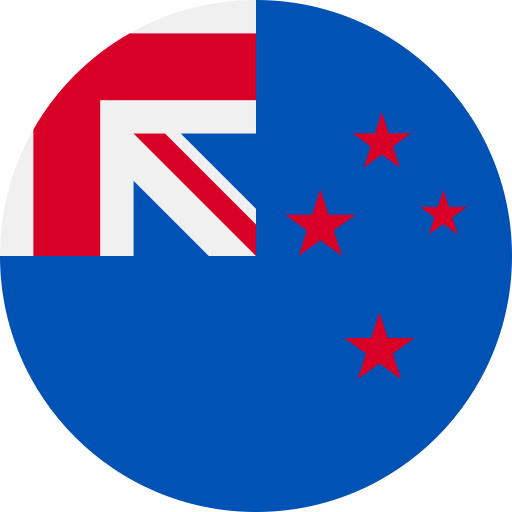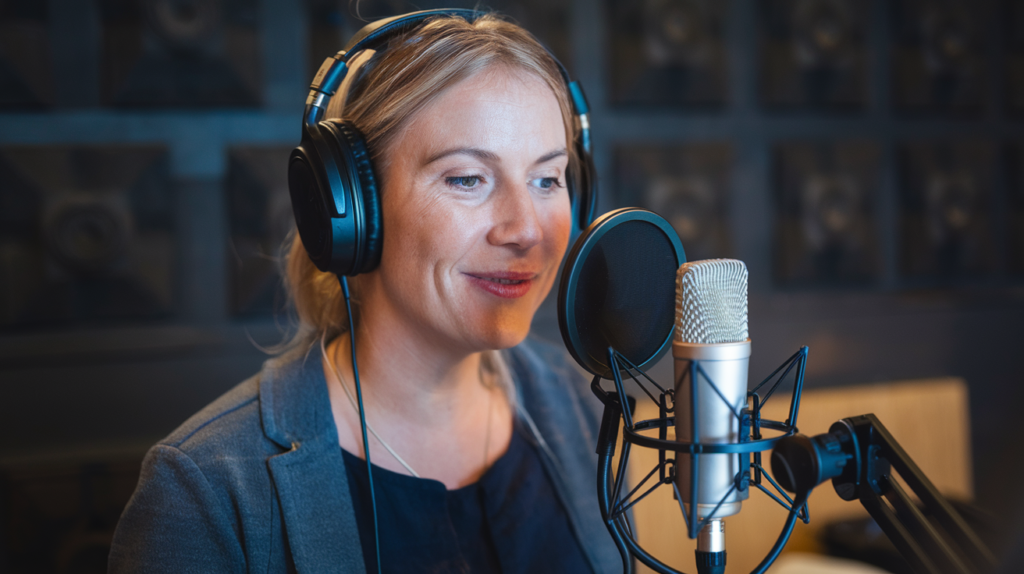Key Takeaways
- Accent Differences: New Zealand English features a flatter intonation with pronounced vowel shifts, while Australian English has a broader and more varied accent.
- Lexical Variations: Word choices differ significantly; for example, Australians use “arvo” for afternoon, while Kiwis say “bach” for holiday home.
- Tone and Delivery Styles: Kiwis typically have a more subdued delivery compared to the livelier approach of Australians, impacting emotional engagement in voiceovers.
- Cultural Context Matters: Understanding local idioms and cultural references is crucial for creating relatable content that resonates with audiences in either region.
- Phonetic Distinctions: Variations in vowel sounds and consonant clarity between the two accents influence audience comprehension and engagement.
- Diversity of Voice Talent: Selecting voice artists who match cultural nuances enhances authenticity, ensuring your project’s message connects effectively with the target audience.
Ever wondered why a voiceover from New Zealand sounds different from one in Australia? You’re not alone! The subtle nuances between New Zealand and Australian English can significantly impact how your message is received. Whether you’re in marketing, film, or any other industry relying on voiceovers, understanding these differences isn’t just interesting—it’s essential.
Overview of Voiceover Differences
Voiceover differences between New Zealand and Australian English can significantly impact your project’s success. These distinctions shape how audiences perceive messages, making it essential to choose the right voice talent for your needs.
Accent Variations
Accents play a crucial role in voiceovers. The New Zealand accent often features a flatter intonation with pronounced vowel shifts, while the Australian accent tends to be broader and more varied. For instance, the vowel sound in “fish” may sound like “fush” in New Zealand but remains clearer in Australia. Understanding these nuances helps select the ideal voice artist for your project.
Lexical Choices
Word choice varies between New Zealand and Australia, which can affect comprehension. For example, “biscuit” is commonly used in both regions, but Australians might say “arvo” for afternoon while Kiwis use “bach” for a holiday home. Acknowledging these lexical preferences ensures that your message resonates with the intended audience.
Tone and Delivery
The tone of voiceovers differs as well. Kiwis often exhibit a more subdued delivery style compared to Australians’ livelier approach. This difference influences how emotions are conveyed through voice acting, impacting audience engagement. Selecting a voice over actor who embodies the appropriate tone enhances overall effectiveness.
Cultural Context
Cultural references also vary significantly between New Zealanders and Australians. Familiarity with local idioms or humor can create a deeper connection with listeners. A skilled voice over artist understands these cultural contexts, tailoring their performance accordingly to ensure relatability.
Recognizing these distinctions sets you up for success when sourcing voiceovers tailored specifically for either market. By choosing wisely based on accent variations, lexical choices, tone delivery styles, and cultural context, you’re better equipped to connect authentically with your target audience.
Phonetic Variations
Phonetic variations between New Zealand and Australian English play a significant role in voiceovers. Understanding these differences helps you select the right voice talent for your projects.
Vowel Sounds
Vowel sounds are a key distinction. In New Zealand English, vowel pronunciation tends to shift, giving it a distinct quality. For example, the short “i” often sounds like “e,” making “fish” sound more like “fesh.” On the other hand, Australian English features a broader range of vowel pronunciations. The diphthongs in words like “goat” can sound more rounded compared to their Kiwi counterparts. This difference impacts how audiences perceive messages delivered by voice artists.
Consonant Clarity
Consonant clarity also varies between these two accents. Kiwis typically pronounce consonants with less emphasis on certain sounds, which can lead to softer articulation in some cases. Australians tend to enunciate consonants more sharply, especially at the ends of words. For instance, an Australian might articulate the “t” in “butter,” while it might become almost silent in New Zealand speech patterns. These subtleties affect listener engagement and comprehension; choosing the right voice actor based on consonant clarity can enhance your project’s effectiveness.
Recognizing these phonetic variations ensures that you connect authentically with your audience through well-matched voice over talent.
Accent and Intonation Patterns
Understanding accent and intonation differences between New Zealand and Australian English enhances the effectiveness of voiceovers. These subtle variations not only shape how messages are perceived but also influence audience engagement.
Influence of Regional Accents
Regional accents play a significant role in distinguishing New Zealand English from Australian English. The New Zealand accent presents a flatter intonation with notable vowel shifts. For example, words like “fish” sound more like “fesh.” In contrast, the Australian accent is broader, characterized by varied vowel pronunciations; it often emphasizes diphthongs, leading to a more dynamic delivery style. Voice artists must recognize these nuances to ensure that their performances resonate authentically with listeners in each market.
Emotional Tone in Voiceovers
Emotional tone significantly impacts voiceover effectiveness. Kiwis typically adopt a more subdued emotional delivery compared to Australians, who often convey liveliness and exuberance. This difference shapes how audiences relate to content—whether it’s a heartfelt narrative or an upbeat advertisement. Selecting the right voice talent involves understanding these emotional tones so that your message aligns with cultural expectations and connects deeply with your target audience.
By appreciating these accent and intonation patterns, you can make informed choices when sourcing voiceover talent for projects aimed at either New Zealand or Australia, ensuring authentic representation that engages listeners effectively.
Cultural Influences on Voiceover Styles
Cultural influences play a significant role in shaping voiceover styles across New Zealand and Australia. Understanding these influences helps you select the right voice talent for your project.
Media Consumption Habits
Media consumption habits differ between New Zealand and Australia, affecting how audiences engage with content. Kiwis often gravitate toward local productions, reflecting their unique perspectives. This preference shapes the need for voice actors who can resonate culturally through authenticity. Australians enjoy a mix of both local and international media, leading to a broader range of vocal styles that appeal to diverse tastes. By recognizing these patterns, you can identify suitable voice artists who connect well with specific audiences.
Storytelling Traditions
Storytelling traditions also inform voiceover styles in both countries. In New Zealand, storytelling tends to highlight community values and shared experiences, which requires voice talent capable of delivering heartfelt performances. Australian stories often embrace humor and wit, calling for lively delivery from voice over artists who can evoke laughter while maintaining relatability. Knowing these traditions enables you to choose a voice actor whose style aligns perfectly with the narrative tone you’re aiming for—whether it’s an emotional tale or a light-hearted commercial.
By acknowledging these cultural nuances, you enhance your project’s potential impact through thoughtful selection of appropriate voice over talent that resonates deeply with audiences in each region.
Notable Voiceover Artists
When exploring the voiceover landscape in New Zealand and Australia, several voice actors stand out due to their unique styles and skills. Understanding their contributions can guide your choices when seeking the right voice talent for your projects.
- Diversity of Accents: Many voice artists from these regions showcase a range of accents that reflect cultural backgrounds. Australian voice talent often features a broader accent variety, while Kiwi artists typically present a more flattened intonation. This diversity allows you to find the perfect match for your desired tone.
- Emotional Delivery: Effective storytelling hinges on emotional resonance. Voice over artists from New Zealand may adopt a more subdued delivery, aligning with community values and shared experiences. Conversely, Australian voice actors often infuse humor and wit into their performances, creating lively narratives that captivate audiences.
- Cultural Relevance: Choosing local voice over talent enhances authenticity in your message. Kiwis resonate deeply with familiar idioms and humor that reflect their culture, making it essential for projects aimed at New Zealand audiences. Similarly, Australian voiceovers thrive on familiarity with local references that engage listeners effectively.
- Specialization Across Genres: Notable voiceover actors excel in various genres—advertising, animation, narration—tailoring their performances based on project requirements. Selecting a versatile artist ensures adaptability whether you’re aiming for an upbeat commercial or a heartfelt narration.
By identifying these distinctive characteristics among notable voiceover artists in both countries, you’ll better appreciate how they contribute to effective communication across diverse markets. Leveraging this knowledge empowers you to make informed decisions when sourcing the ideal voice actor for your next project.
Conclusion
Recognizing the voiceover differences between New Zealand and Australian English is vital for effective communication. It’s not just about accent or word choice; it’s about connecting with your audience on a deeper level. Whether you’re producing a marketing campaign or a film project understanding these nuances can make all the difference in how your message resonates.
By selecting voice talent that aligns with cultural expectations and emotional tones, you enhance authenticity and engagement. This attention to detail not only improves comprehension but also fosters a stronger connection with listeners. Keep these distinctions in mind as you navigate the world of voiceovers to ensure your projects truly reflect their intended impact.
Frequently Asked Questions
What are the main differences between New Zealand and Australian English accents?
The New Zealand accent tends to have a flatter intonation with distinct vowel shifts, while the Australian accent is broader and more varied. These differences affect how words are pronounced and can influence listener comprehension in voiceovers.
How do lexical choices differ between New Zealand and Australia?
Lexical differences include terms like “arvo” for afternoon in Australia versus “bach” for a holiday home in New Zealand. Such variations can impact understanding and communication effectiveness in marketing and film industries.
Why is emotional tone important in voiceovers from these regions?
Emotional tone influences how audiences connect with content. Kiwis usually adopt a more subdued style, while Australians often incorporate humor and liveliness. Choosing the right emotional delivery helps align messages with cultural expectations.
How do storytelling traditions shape voiceover styles in New Zealand and Australia?
In New Zealand, storytelling focuses on community values requiring heartfelt performances, whereas Australian storytelling often embraces humor, necessitating lively delivery. Understanding these traditions ensures that voiceovers resonate culturally with listeners.
What role does cultural context play in selecting voiceover talent?
Cultural context enhances audience engagement by using local idioms and humor that resonate with listeners. Selecting culturally relevant voice talent improves authenticity, making messaging more effective across different markets.
Are there notable voiceover artists unique to each region?
Yes, both regions boast unique voiceover artists who reflect their respective styles. Australian artists often show a broad range of accents, while Kiwi artists exhibit a more flattened intonation, each contributing to their culture’s narrative style.
How do media consumption habits differ between Australians and Kiwis?
Kiwis generally prefer local productions that require culturally resonant voices, while Australians enjoy both local and international media leading to diverse vocal styles. This affects the type of talent needed for effective communication in each market.
Why should I consider phonetic variations when choosing voiceover talent?
Phonetic variations such as vowel sounds are crucial because they impact listener engagement and comprehension. Understanding these nuances ensures that chosen talents convey messages clearly tailored to regional audiences’ preferences.







